Recently updated on October 22nd, 2025 at 11:54 pm
Fairytales, Viking sagas, millennia-old royal traditions and iconic Scandinavian design all come together in a compact country that regularly tops the World Happiness Report, its six million people renowned for their proud community spirit.
Bordered by Germany to the south and surrounded by the North Sea and Baltic Sea, Denmark’s territory runs along the Jutland peninsula and across some 400 islands. The largest, Sjælland (Zealand), is where you’ll find the capital Copenhagen (København), while Fyn (Funen) lies between Jutland and Sjælland. Aarhus and Aalborg are the key hubs in Jutland, while Odense is the heart of Fyn – get a handle on the bigger picture with this handy map.
Across the country, heritage hotspots abound, including five national parks, 12 UNESCO World Heritage sites, 26 key palaces and castles, and 730-plus herregårde manor houses. These historic sites embody every chapter of Denmark’s past – from Viking power bases and medieval fortresses to Renaissance water-palaces and rococo residences – and, of course, the contemporary homes of today’s royal court, helmed by King Frederik X and ‘our own’ Queen Mary.
Ready for your own great Danish escape? Read on to discover the very best castles to visit in Denmark and just some of the nearby attractions worth a scenic detour.
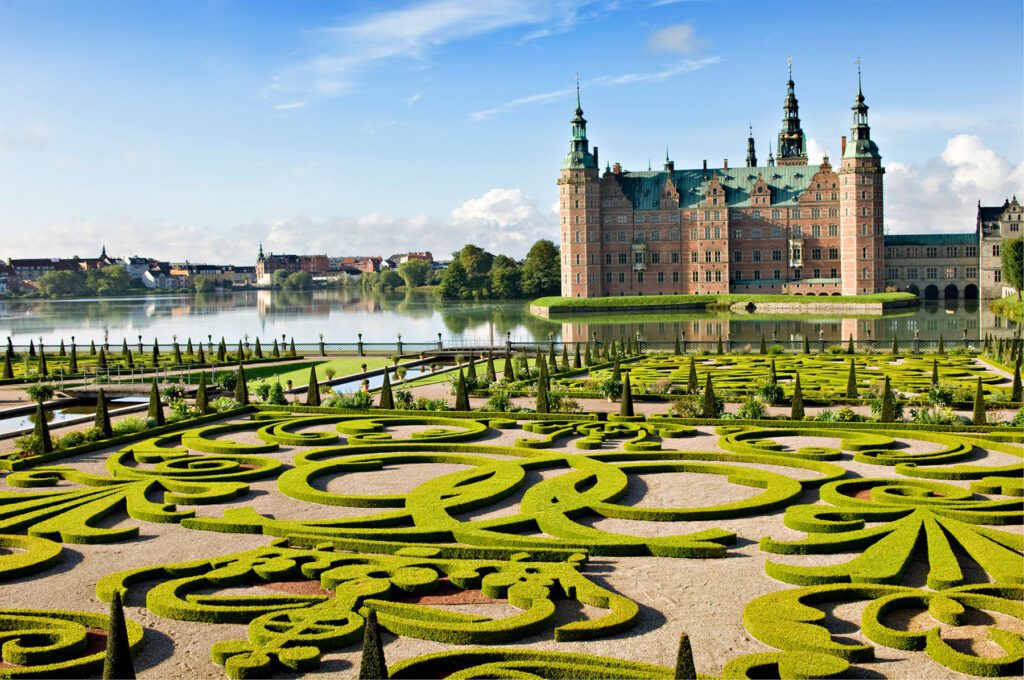

1. Frederiksborg Castle – Danish Royal History at Its Finest
Dubbed ‘The Nordic Versailles’ for its unapologetic grandeur, Frederiksborg Castle is the largest Renaissance residence in Scandinavia, draped over three islets in Hillerød, 35km north of Copenhagen.
Built by King Christian IV in the early 17th century, its ornate gables, copper spires and elaborate gardens were designed to reflect Denmark’s power during an age of European rivalries and global expansions.
Explore its opulent reception halls, the richly decorated Chapel of Orders, and formal baroque gardens, then take a deeper dive into local heritage at the Museum of National History and the National Portrait Gallery – both within the castle complex. Frederiksborg is easily reached by train from Copenhagen (in less than 40 minutes) and is open year-round.
Pair it with… a meander around Hillerød. Here, you’ll find the Teglstrup Hegn forest walking trails, the Royal Stage cultural centre and exceptional brews at Rømers Coffee Bar.
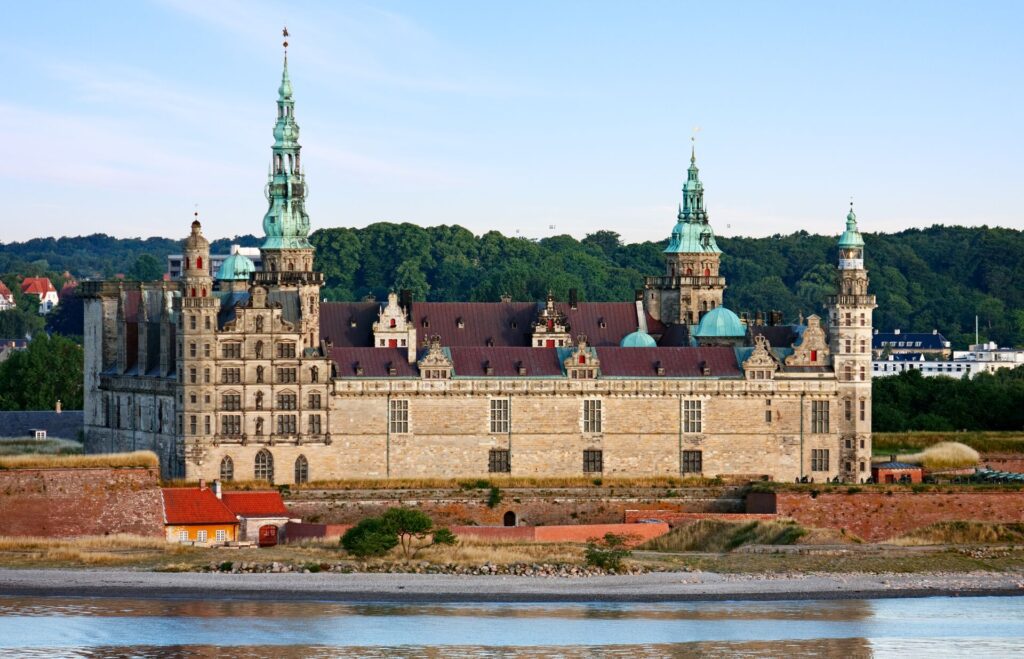

2. Kronborg Castle – The Legendary Home of Hamlet
Immortalised by Shakespeare in the early 1600s as Elsinore – the brooding backdrop for Hamlet – Kronborg has stood sentinel at the narrow Øresund Strait for more than four centuries. But the fortress’ theatrical setting probably didn’t much factor into King Frederick II’s design strategy when he built it in the 1500s – its location in Helsingør gave Denmark the power to control and tax all the trade on the Baltic Sea. Today, its cannon-lined ramparts, star-shaped bastions and wide moats will stop you in your tracks, but step inside and you’ll find vaulted halls, royal chambers, and one of the largest ballrooms in Northern Europe. And a network of passages burrow deep beneath the castle, where the figure of Danish folk hero Holger Danske sleeps – but, as the legend goes, is ready to rise again if Denmark’s ever in danger. Now a UNESCO World Heritage site, Kronborg is open year-round (with shorter winter hours), and is just 45 minutes north of Copenhagen by train.
Pair it with… a detour to nearby Roskilde. This town’s home to the UNESCO-listed Roskilde Cathedral – burial place of Danish monarchs – the Viking Ship Museum, and, if you’re visiting in summer, one of Europe’s largest music festivals.
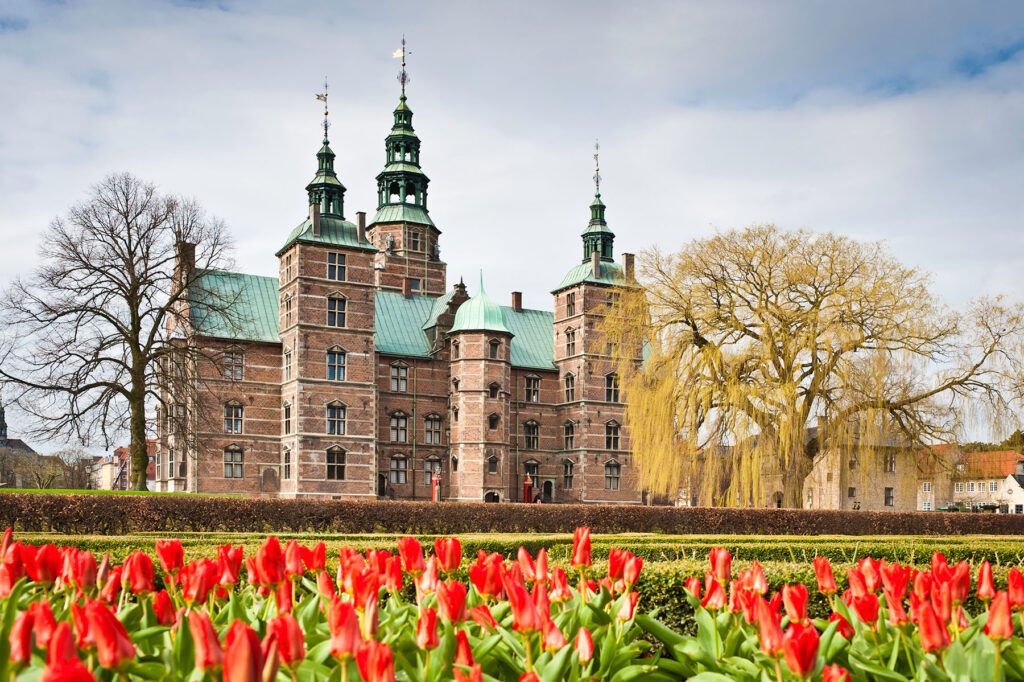

3. Rosenborg Castle – Crown Jewels and Royal Treasures
Within easy walking distance of central Copenhagen, Rosenborg was built in the early 1600s as King Christian IV’s private retreat, designed with indulgent comfort, arty flourishes and extravagant grounds. Today, its Dutch Renaissance turrets and formal King’s Garden still make a striking impression as it rises behind the Nørreport Metro Station, clearly visible from the surrounding streets. Its basement has long served as a vault for the Danish Crown Jewels and regalia, its collection including coronation thrones, sceptres, and priceless jewellery created between the late 1600s and early 1800s. And Rosenborg’s interiors are just as extravagantly accessorised, with tapestries, Venetian glass and ivory trinkets showcasing Denmark’s cultural and artistic heritage. The castle is open year-round, but closed on Mondays from November to April, and there are timed-entry tickets in peak season.
Pair it with… further adventures in Danish design. Start with the Designmuseum Danmark, the Danish Architecture Centre, and the Louisiana Museum of Modern Art.
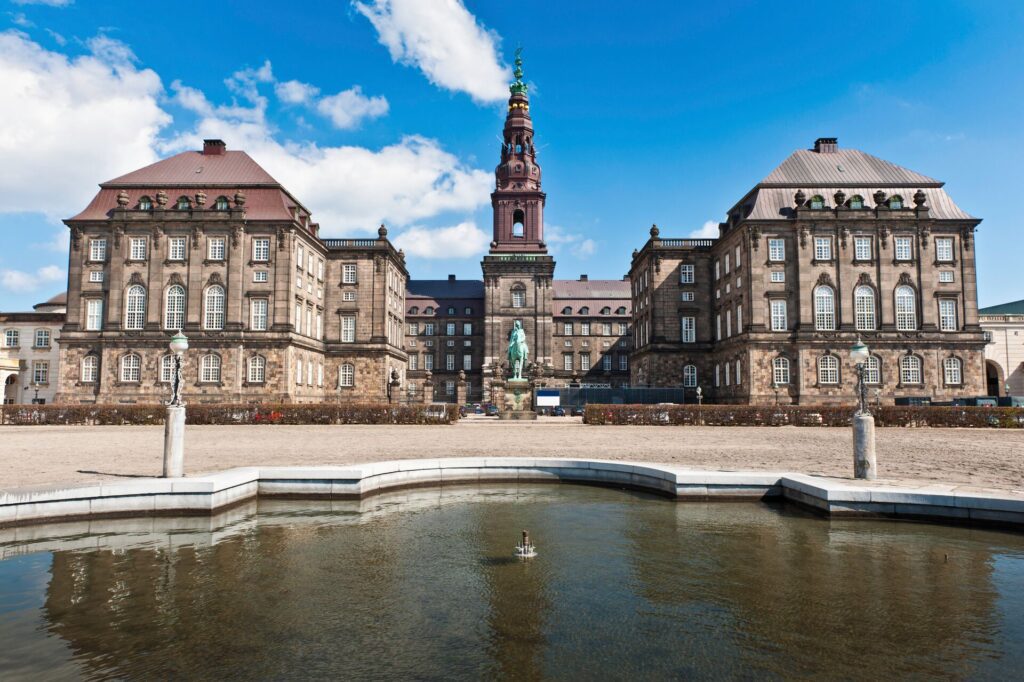

4. Christiansborg Palace – Government, History, and Royal Ruins
In central Copenhagen, Christiansborg Palace is the only building in the world that houses all three key branches of government – the Parliament, Supreme Court and Prime Minister’s Office – alongside royal reception rooms that are very much still in use. The current palace, completed in 1928, is the latest in a series of buildings that have stood on the site since the early 12th century, beginning with a fortress built by Bishop Absalon in 1167AD. Today you can see its history unfurl in the excavated ruins of the original medieval castle and bishop’s palace, and as you move through the Royal Reception Rooms, Great Hall, Royal Stables and Palace Chapel.
Christiansborg is open most of the year, but some areas are closed to the public when they’re in official use.
Pair it with… an Adventure World exclusive culinary excursion. Starting at nearby Copenhagen’s Torvehallerne Market, our expert local guide will lead you on a tasting tour to meet the makers and tuck into local classics like smørrebrød, Danish cheeses, craft beer and gourmet hot dogs, so you can MAKE TRAVEL MATTER® with every bite.
Our 8-day Authentic Denmark itinerary showcases all the highlights of Scandinavia’s smallest country from Copenhagen to Odense, Bramming, Aarhus and the Jutland Peninsula.
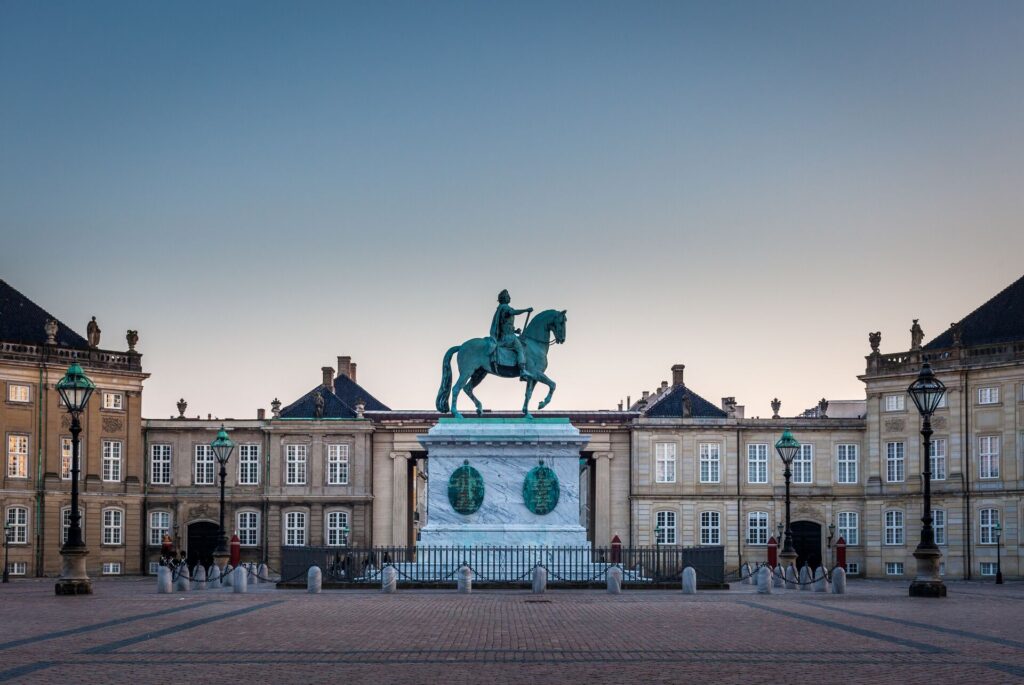

5. Amalienborg Palace – Residence of the Danish Royal Family
Just 20 minutes’ walk away from Christiansborg, the official home of Denmark’s royal family is actually four identical Rococo mansions flanking an octagon-shaped cobbled plaza. Amalienborg was originally built in the 1750s for noble families but became the royal residence after Christiansborg burned down in 1794. Today, two of the palaces are open to the public, offering fascinating historic exhibits amid interiors blending historic grandeur with personal touches from the modern-day monarchs. You’ll see ceremonial rooms like the Throne Room and Gala Hall, as well as displays of royal portraits, uniforms, gifts and jewellery drawn from the Danish Royal Collection. Plus, the Changing of the Guard takes place here every day at noon. When the royals are at home, only the private quarters are closed and the museum areas remain open as usual (except on Mondays in October-April, when they also close).
Pair it with… a stroll to Frederiks Kirke (a domed 19th century Evangelical Lutheran site also known as the Marble Church); the Royal Danish Opera House, and Nyhavn, Copenhagen’s renowned entertainment district.
6. Egeskov Castle – A Fairytale Castle for Families
Egeskov is one of Europe’s best-preserved 16th century water-castles, presiding over the island of Fyn like a Renaissance daydream. Sitting in the middle of a lake and accessed only by a narrow bridge, it was built by Frands Brockenhuus for defence during a period of civil unrest. Today its turrets and moat hide a family-friendly wonderland: historic rooms with original furnishings, sprawling gardens, treetop walks, a vintage car and motorcycle collection, and seasonal events including June’s Heartland Festival and Christmas at Egeskov (from late November). It’s open every day from late April to mid-October, with limited weekend openings during the festive season.
Pair it with… more historic and fairytale fun around Odense. Explore the Viking Ring Fortress of Nonnebakken for a glimpse into Fyn’s early history, then visit Hans Christian Andersen’s Childhood Home, where Denmark’s beloved storyteller began his life’s work.
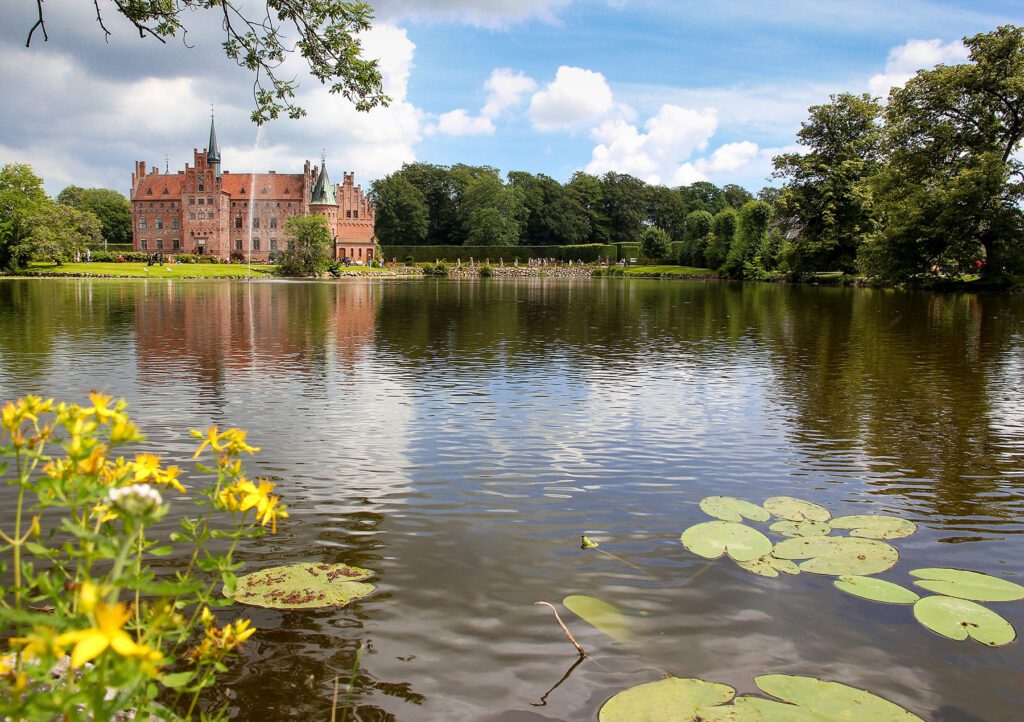

7. Dragsholm Castle – Stay and Dine Like Royalty
Dating to the late 12th century, Dragsholm Castle is one of Denmark’s oldest and most atmospheric strongholds – and possibly its most haunted. Located in Odsherred (about 75 minutes’ drive west of Copenhagen), today it offers luxury hotel stays and acclaimed fine-dining served with a side of centuries-old legend – this was once a medieval fortress, later a Renaissance palace, and for a time, a prison for aristocrats. Its ghostly reputation stems from tales of the ‘White Lady,’ a young noblewoman entombed within the walls; the ‘Grey Lady,’ said to protect the castle; and the ghost of the Earl of Bothwell, who also died there.
Rooms range from heritage suites to sleek minimalist spaces, and the on-site Michelin-starred restaurant, Dragsholm Slot Gourmet, also holds a Green Star for its sustainable, seasonal, locally grown produce – much of it from the castle’s estate. But even if you’re not staying overnight, you can visit during select periods between April and October, although access may be limited if private events are scheduled.
Pair it with… a wander through Odsherred’s UNESCO-listed Global Geopark. Here you can experience Ice Age-formed landscapes, views across Lammefjord’s reclaimed farmlands, and enjoy the bird-filled bays around Nekselø, visible from the castle itself.
Beginning in royal Copenhagen, our 22-day Grand Nordics holiday takes in the grandeur of Denmark before venturing to Sweden, Finland and Norway, discovering the very best of Scandinavia.
8. Marselisborg Palace – The Royal Summer Retreat
Overlooking Aarhus Bay on the Jutland Peninsula, Marselisborg Palace has long been the Danish royal family’s summer residence. In 1902 the people of Denmark gifted it to then-Crown Prince Christian (later Christian X) and Princess Alexandrine as a wedding present – funded by cities and businesses across Jutland. Today, King Frederik X and Queen Mary uphold the tradition of summering here.
All year round, you can explore Marselisborg’s 13-hectare Palace Park, where sculptures, rose gardens, mature trees, herbal beds and sweeping bay views all add an extra layer of grandeur to the regal setting.
Pair it with… a visit to Den Gamle By in nearby Aarhus, an open-air museum that recreates 400 years of Danish urban life in 75 historic buildings. And if you’re in town in June, MAKE TRAVEL MATTER® at the NorthSide Festival – Aarhus’s annual celebration of sustainable music, culture and food.
9. Fredensborg Palace – The Palace of Peace
Fredensborg translates to ‘Palace of Peace’ – built by King Frederick IV in the 18th century to commemorate the end of the Great Northern War. These days it serves as the royal family’s autumn home and their preferred site for hosting state visits and family celebrations. It’s alongside Lake Esrum in North Zealand, and, while the main building is closed to the public except for guided tours in July, the gardens and private orangery are open seasonally.
Its extensive grounds are especially notable, too: Fredensborg sits within the UNESCO-listed Par Force Hunting Landscape, an historic network of geometric forest roads laid out for royal hunts – a rare example of Baroque landscape planning in northern Europe.
Pair it with… a walk through the Par Force Hunting Landscape itself, then refuel at Skipperhuset, the former royal boathouse on Lake Esrum, which is now an excellent cafe.
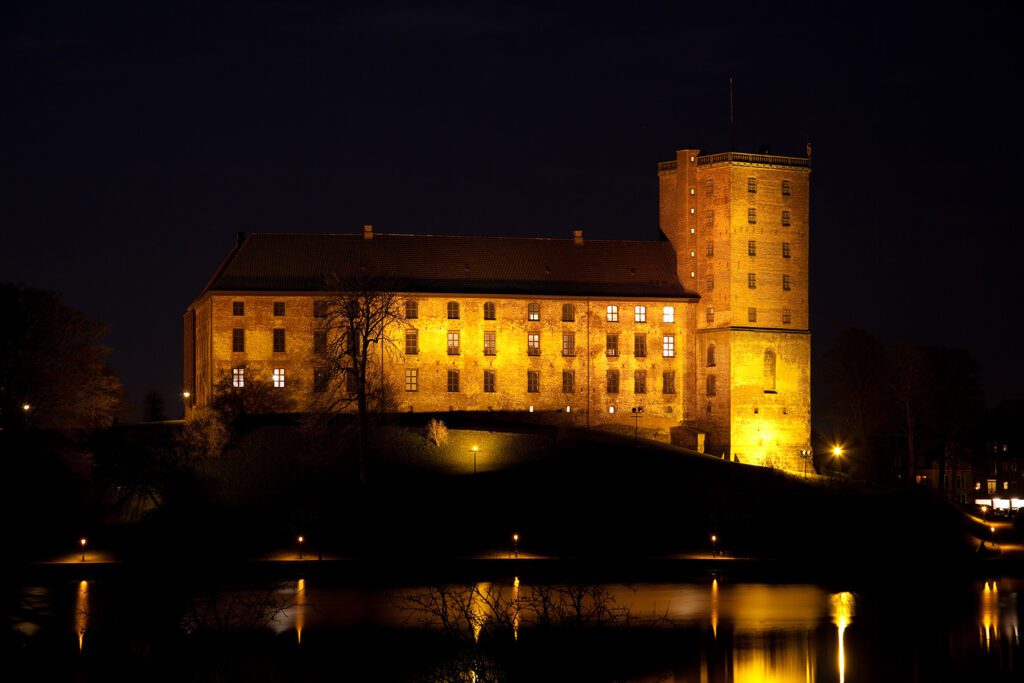

10. Koldinghus – The Last Royal Castle in Jutland
Perched high on a hill above Kolding Fjord, Koldinghus is the last remaining royal castle in Kolding. Founded in the 13th century as a defensive stronghold, it later became a royal residence and a Renaissance palace before an 1808 inferno left it in ruins – reportedly caused by Spanish allied troops stationed at the castle during the Napoleonic Wars. Today, with its dramatic combination of restored and ruined architecture, and modern galleries integrated into its ancient walls, Koldinghus hosts exhibitions ranging from Danish silverware to international art; it’s open year-round and well worth a visit.
Pair it with… a trawl through the impressive collections of modern art and design at the nearby Trapholt Museum, or soak up the peaceful atmosphere on stroll through Marielundsøen.
11. Graasten Palace – Gardens and Royal Charm
Graasten Palace, in southern Jutland, is the royal family’s second summer retreat. While the current main building dates to the mid-18th century, the site was originally home to a 16th century manor which burned down in 1603. A new building followed, but it was also destroyed by fire, prompting the construction of the Baroque-style palace you see today.
While the palace is closed when the royals are home, its lakeside setting and meticulously maintained gardens make it well worth a visit; they’re open to the public from April to October and feature symmetrical beds, sweeping lawns, orchard paths, native woodland and walking trails.
Pair it with… a combination of Jutland adventures. Visit the UNESCO-listed Jelling Stones and Viking Age burial mounds; for a birding and nature fix, head to the World Heritage-listed Wadden Sea National Park, and check out playful Danish design at Legoland Billund.
Savour unique flavours and discover produce as fresh as the Scandinavian air as you feast your way through Copenhagen and Oslo on Adventure World’s 7-day Culinary Nordic Trail holiday.
12. Nyborg Castle – A Medieval Fortress in the Heart of Denmark
Once the seat of Denmark’s first parliament, Nyborg Castle on eastern Fyn was originally built under King Valdemar in the late 1100s. But from 1282, Denmark’s first Danehof (a medieval parliamentary assembly) was held here, making Nyborg the political heart of the kingdom for centuries. Its strategic location by the Great Belt – the strait between Zealand and Fyn – also made it a key stronghold for national defence and trade, as it controlled passage between eastern and western Denmark.
Centuries on, you can explore the restored castle keep, ramparts, and moat, along with permanent exhibitions focusing on medieval royal power, politics and court life. While the castle is currently undergoing major restoration works, some areas are still open; for the latest updates, check the official website.
Pair it with… some of eastern Fyn’s other highlights, including the privately owned Holckenhavn Castle, the Great Belt Bridge, and the Nyborg Distillery, famous for its organic whisky and gin.
